It may be an aspect of work that takes up a lot of their time, but our C-Store Champions agree that remerchandising is well worth the effort.
Sid Ali, of Nisa Mintlaw & Maud, constantly monitors price and sales figures to decide which categories require a refresh.
Raj Aggarwal, of Spar Queens Drive and Spar Hackenthorpe, goes to a variety of sources for merchandising advice
Sandeep Bains, Simply Fresh, Faversham, says a well merchandised store is critical to sales.
Malcolm Crump, of Spar Compton, Wolverhampton, likes to keep his store ‘fresh’ and ‘inspiring’ with new merchandise and displays
How much of your time and energy goes into remerchandising your stock and creating displays?
Sid: Quite a lot of time, probably four to five hours a week. I always think if you can’t sell a crate of the product in four weeks then you should be questioning why you are selling it. Of course, there are always exceptions to the rule. Take cranberry sauce, for example – it isn’t going to sell that much but you have to have it available for those people who will come in especially for it. Generally, though, it’s important to devote more space to the best-sellers.
Raj: It’s hard to put an exact time on it, but I can say that I spend a fair bit on this. Every night you have to make sure the store is stocked and faced up. It’s also really important to do displays with products that are on offer, as well as keeping them within their category. POS is also important to get across the right brand message to the consumer. The other element is secondary sitings. Toys and other products for kids should be put near the counter, low enough for them to see, so that they will spot them on their way to the checkout and go on at their parents until they get it!
Sandeep: A huge amount of time. It’s a critical part of the job. A good, tidy, well merchandised store can have a big impact on sales. I spent all day today filling our new gondola ends with promotions. We changed the layout of the store three weeks ago and now have three and a half more promotional bays than we did previously. These are important because we need strong promotions to attract customers and maximise margin. It’s important to merchandise the right products together to increase basket spend. For example, if you’ve got pasta sauce on special offer, you want to put it next to the pasta, and then you can increase basket spend further by siting these next to the grated cheese, and perhaps inspiring the shopper with a side dish.
Malcolm: It’s a big and important part of the job so I spend a large amount of my time on this. We recently had football memorabilia such as shirts and flags on a display, as well as decoration around the store. As with any display, I check that constantly to ensure it looks good. You don’t put a display up and forget about it.
How regularly do you assess each category’s performance and how frequently do you remerchandise?
Sid: All the time. For example, the price of milk is low right now so I’m thinking of moving it to the back of the store to encourage people to look at other items on their way to that cheap item. I don’t really want them just picking up milk then leaving. I could, perhaps, put it next to the fruit and veg so that people will pick up that at the same time. The more you think about it, the more you can end up moving the whole store around.
Raj: I remerchandise once every 13 weeks. You’ve got to give products enough time to embed themselves and catch the attention of the shoppers. A new product might not sell initially, but it might be that, eventually, it becomes a best-seller.
Sandeep: We assess the categories about every three months in order to give the products enough time to find their place and start selling. We work closely with the different suppliers. We like them to work with us and look at our epos data in order to give us appropriate advice.
Malcolm: When you’re in your store every day, like I am, you are able to see for yourself when a display or category is looking tired or outdated and needs remerchandising. Epos systems do allow automatic ordering, but you have to stay on top of that to ensure it doesn’t re-order products which aren’t good sellers.
What was the last category you remerchandised and did it have a positive effect?
Sid: Soft drinks – we reduced the range and gave more space to the best-sellers. Sales went up by 44% after that. I’ve also just remerchandised the crisps to get rid of any flavour that I wasn’t selling a crate of within four weeks. Now I devote more space to the best-sellers and sales have increased.
Raj: We remerchandised pet foods about three weeks ago with the help of Mars Petcare. I felt that customers weren’t very inspired by the category so I contacted Mars Petcare, who sent a rep round. They spent half a day remerchandising and since then the category has seen a double-digit increase in sales. I think the pet category can get pushed under the radar. It can be a big category if it’s merchandised well.
Sandeep: We did the whole shop three weeks ago. We stripped it back, looked at our epos data, got merchandisers to look at the data and help us make planograms, and completely remerchandised. It’s too early to tell the result of that work. It’s a busy time of year now anyway so it would be wrong to assume that’s due to the remerchandising. We will be able to tell from our sales data what sort of impact it has had in about two to three months,
Malcolm: The last category we remerchandised was our ethnic products. We had a new range of street food-style microwavable noodle pots come in. When we started to add them in we ended up remerchandising the whole category. We’ve definitely had an uplift in sales of those products since. Sometimes it’s easy to just stick to the best-sellers, but you have to get interesting and inspiring products as well.
How important are seasonal displays?
Sid: Very important. During the Euros, for example, we’ve had a display of snacks and beer. Some people don’t realise how important those displays are. In the past I’ve heard retailers say they don’t think that Easter has had a great influence on sales, but they don’t realise that could be because they haven’t made an Easter display.
Raj: Very important. We’ve had special Euros displays, around the beers, and that gives a boost to that category.
Sandeep: They aren’t hugely important in our store. Seasonal displays tend to appeal more to people on a distress mission and they don’t make a huge impact for us. Obviously, if we have a hot week then we ensure to have a good display of beer and other summer get-together products, but that varies from one week to the next.
Malcolm: They are very important to me. Anything that creates extra sales is important. We like to get in new and interesting products that you wouldn’t find in other Spar stores. In the England football display we had flags, arm bands, shirts and cider with the England flag on – things that inspire extra sales. For Father’s Day we had a display with Father’s Day mugs and kegs of Speckled Hen beer. Those sold really well.
Do you supervise displays yourself or do you give a member of staff responsibility for it?
Sid: I do it. There are local specialities which I know about. I don’t want potential best-sellers being given less space or being taken off the shelves.
Raj: Mostly the staff do it, but I oversee it all.
Sandeep: I create the planograms and supervise the staff in creating the displays.
Malcolm: Both. Sometimes my staff find the new products and display items, sometimes I do. No one person has particular responsibility for it, but we are all on the lookout for new ideas to keep the place looking fresh and to keep our offering interesting.
Do you merchandise the special offers from the promotional leaflet in a single place?
Sid: Sometimes we put them in the gondola ends and put the leaflet into the baskets to make shoppers aware of them, as it’s not much use them finding the leaflet once they’ve reached the counter. In one of our stores we have a whole wall for the promotional items; they are usually all the heavy bulky items. We encourage shoppers to pick up baskets for these as well and this then encourages them to pick up extra items.
Raj: We merchandise them in several places. It’s important to have them on promotional display as well as in their own category.
Sandeep: I put the strongest promotions on the gondola ends, because they create a real sense of value in store. The rest of the promotions go on the shelf with their category.
Malcolm: If there’s a new product on special offer I will put them in a special stand so it attracts people’s attention. If it isn’t a new product and it’s on a promotional display it has to be within the category as well for those people who have come in especially to buy that item.
Who do you go to for advice?
Sid: I follow our supplier’s advice just to get started. They usually get it about 90% right, but they don’t always account for regional variations so I usually just have to tweak the last 10%.
Raj: If not the suppliers, then the symbol group or I look in trade magazines. Suppliers are usually able to provide category advice now rather than just pushing their own brands, and their advice is usually very helpful.
Sandeep: We get a lot of information from Costcutter, but the best way to go is to speak to other retailers and share as much knowledge as possible, and try to implement what you’ve learnt within your store. In the United Biscuits Retail Ambassador Club we work very closely with one another to merchandise our biscuit and snacking fixtures and this relationship is really successful. I’ve also looked on United Biscuits’ category management website, which is incredible. It has planograms, best-sellers, everything you could need. I’m also a Heineken Star Retailer and I get a lot of advice from them.
Malcolm: Some things we can do ourselves, such as with the ethnic foods category. Generally, though, we work really well with Spar and they are very helpful.
Have there been times when you’ve merchandised in a way that really hindered sales?
Sid: We put the hanging baskets of sweets on an end panel away from the confectionery and that really didn’t work.
Raj: There have been a couple of times that I’ve put a product on a display and it just hasn’t sold. I think there are some items that aren’t as good at catching the shopper’s eye.
Sandeep: It’s always trial and error. There have been times when I’ve merchandised the wrong things in the wrong places and that has hindered sales, but you learn from your mistakes.
Malcolm: It’s hard to think of a time I’ve remerchandised in a way that actually hindered sales. There are absolutely some categories that work better on display than others, but most items will benefit from being on display. Confectionery works particularly well.
What’s your advice to other retailers who want to remerchandise to boost their sales?
Sid: Start with the simple categories such as the crisps and soft drinks. Look at the sales data and get rid of flavours that haven’t sold in the past month. I always think about sales when I’m ordering items. Don’t just re-order items whenever they go out of stock; really think about whether that item sells or if you could fill that space with something better.
Raj: Get advice from your supplier. Look at your sales data with them and create a new plan with their help.
Sandeep: Work as closely as you can with suppliers and use their websites and any other help you can access, to get as much information as possible regarding best-sellers. Then look at where you are and your shopper demographic. Marry the two together, speak to other retailers in the same position as you – don’t rush into it without doing your due diligence first. It’s important to remember there’s no one size fits all with merchandising – the best-sellers across the country aren’t necessarily the best-sellers in your area.
Malcolm: Keep it fresh and don’t leave any category or display too long or let them get tired. If it’s a new product, get it on display early. The amount of times I’ve thought it’s far too early to bring in a product, then as I’m putting it on the shelf people are asking to take it. Even if they don’t buy it the first time they come in, it will stay in their minds that they can buy it in your store in the future.





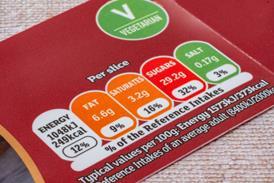
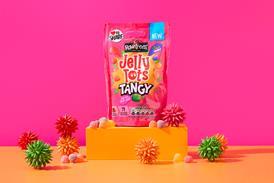
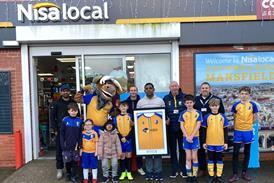









![C-Store_Champions_logo-CHOSEN[1] 2023](https://d2dyh47stel7w4.cloudfront.net/Pictures/380x253/6/5/7/301657_cstore_champions_logochosen12023_817064.jpg)
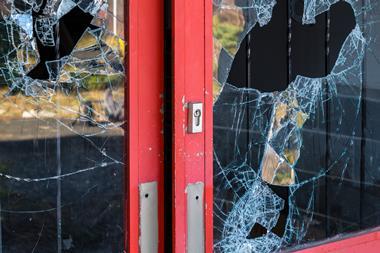
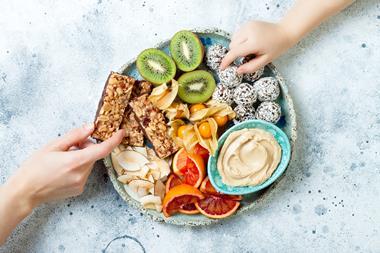
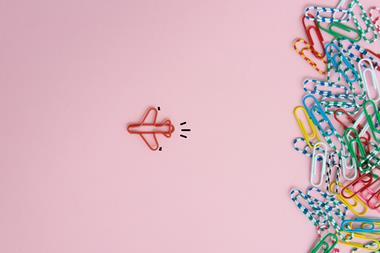

No comments yet